Brief Introduction
With the official slogan of World Migratory Bird Day 2022 “Dim the Lights for Birds at Night!”, this global campaign focus on the impacts of light pollution on migratory birds. To raise awareness among EAAFP Partners, researchers, conservationists, and the general public about the impact of Light Pollution to migratory birds in the East Asian – Australasian Flyway (EAA Flyway), a webinar series will be organized.
1. Title: The Invisible Natural Spectacle Happening Over Our Heads As We Sleep: Nocturnal Bird Migration In Beijing
- Date/Time: 6th October, 2022 (Wed), 11am-12pm KST
- Meeting Platform: Zoom
- Language: English
- Registration: https://us02web.zoom.us/meeting/register/tZwrf-utqT4pE9JfP4LMxjiZuFwAkhuH6O0o
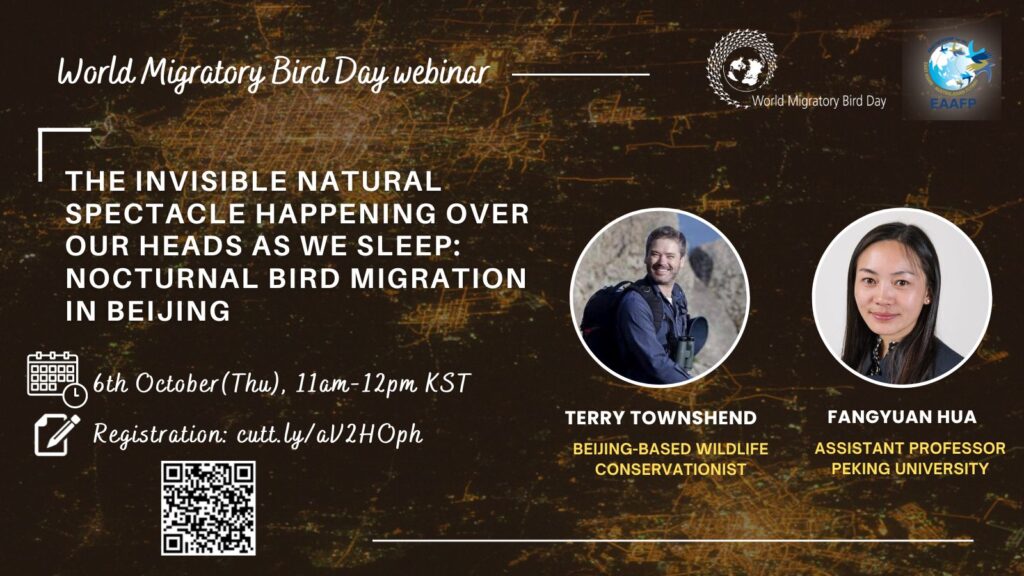
Speaker:
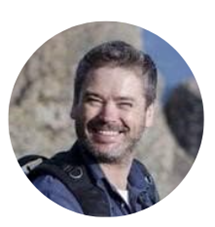 |
Terry TownshendBeijing-based wildlife conservationistTerry Townshend is a Beijing-based wildlife conservationist and policy expert. He is passionate about public engagement on biodiversity and set up projects to track two of Beijing’s most iconic birds – the Beijing Swift and Beijing Cuckoo – both of which migrated to southern Africa for the northern winter, attracting media coverage including front page of the New York Times. In 2017 he worked with ShanShui Conservation Center to set up an award-winning community-based wildlife watching tourism project with yak herders on the Tibetan Plateau, focusing on Snow Leopards.Terry runs the Birding Beijing website (https://birdingbeijing.com/), celebrating the birds and wildlife of China’s capital city. He serves on the Global Advisory Group of BirdLife International, the largest conservation partnership in the world and is a Fellow of the International League of Conservation Writers. In 2021 he was awarded a gold Beijing Citizen Award by 新京报 (Beijing News) for services to the environment, the first foreign recipient in its history. |
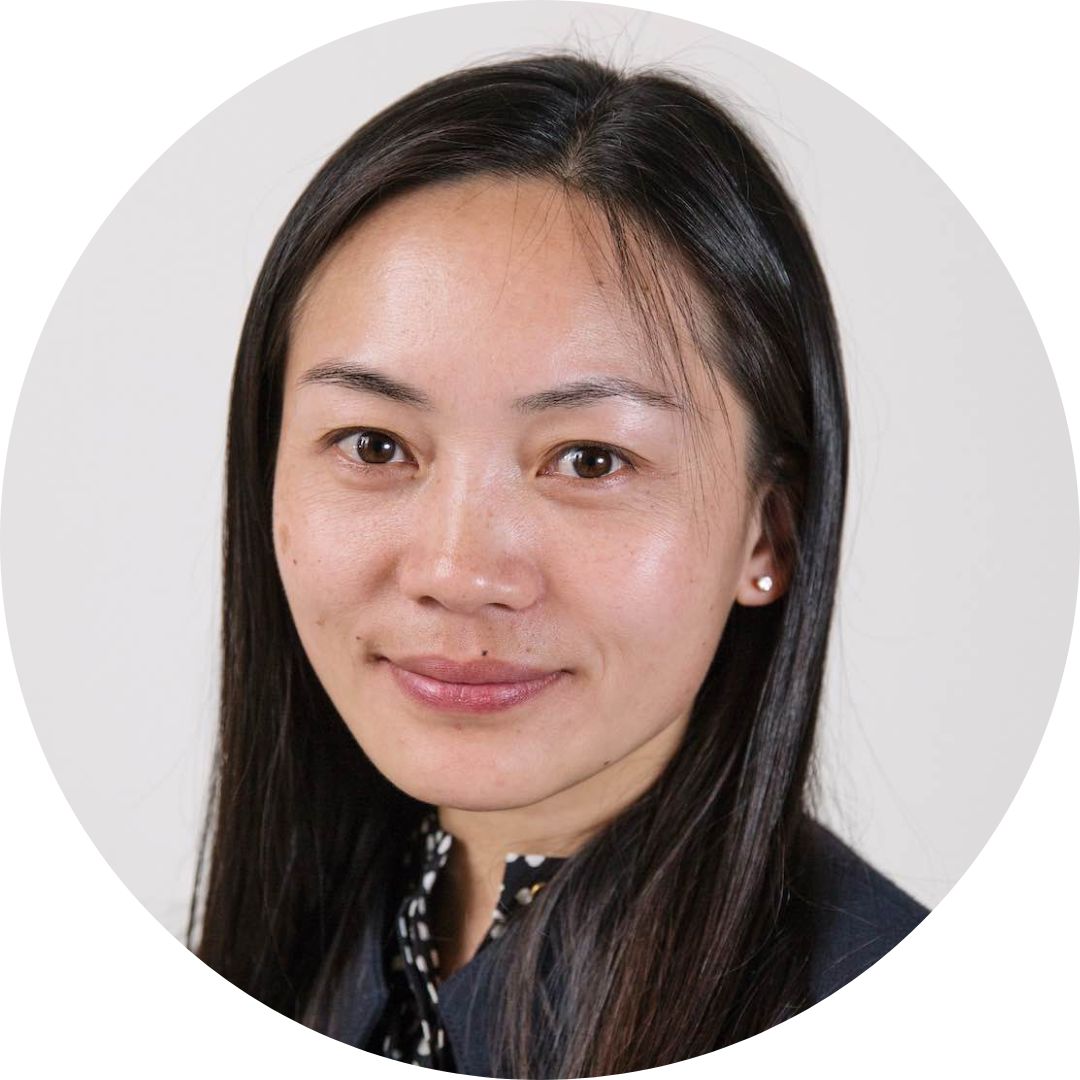 |
Fangyuan HuaAssistant Professor at Peking University is a conservation ecologist at Peking University in China. Her research aims to aid the conservation and restoration of forest biodiversity, by studying how human alterations of forest ecosystems influence the ecology of wild species, and what opportunities exist to alleviate negative impacts and achieve biodiversity gains. Her work uses a combination of fieldwork and desktop analysis, on a variety of organisms including birds and arthropods. Prior to joining Peking University as an assistant professor in 2019, Fangyuan obtained her Ph.D. from the University of Florida, and conducted postdoctoral research at Princeton University and the University of Cambridge. |
Webinar summary:
Every spring and autumn in East Asia, millions of birds make incredible journeys from breeding grounds as far north as the Arctic Circle to non-breeding grounds as far south as Australia and New Zealand. The majority of these birds – around 80% – fly at night as we sleep in our beds. A groundbreaking new study in autumn 2021 by Peking University and Birding Beijing used acoustic surveys – from the roof of the Asian Infrastructure Investment Bank (AIIB) headquarters in Beijing – to gain an insight into this invisible natural spectacle over China’s capital city. The results are staggering, with more than 34,000 calls recorded from more than 60 species, including woodland, grassland and wetland species. At a special seminar in September 2022 the Beijing Government and AIIB signed a letter of intent to cooperate on this study, including sharing the data to inform land management policies in China’s capital so that the city can fulfill its role in the flyway – to facilitate safe passage for these migratory birds.
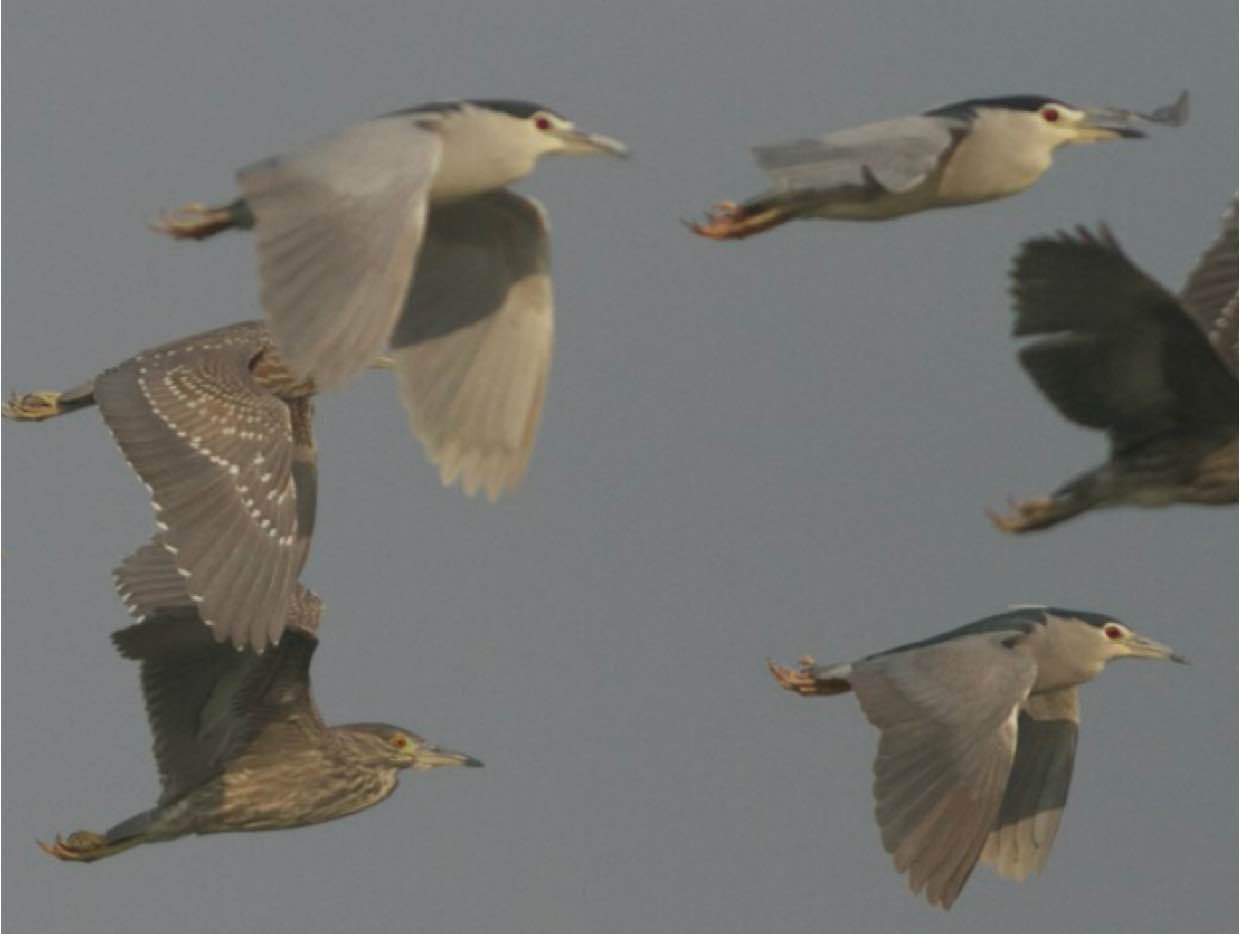 Black-crowned Night Heron (second most common species recorded) © Terry Townshend |
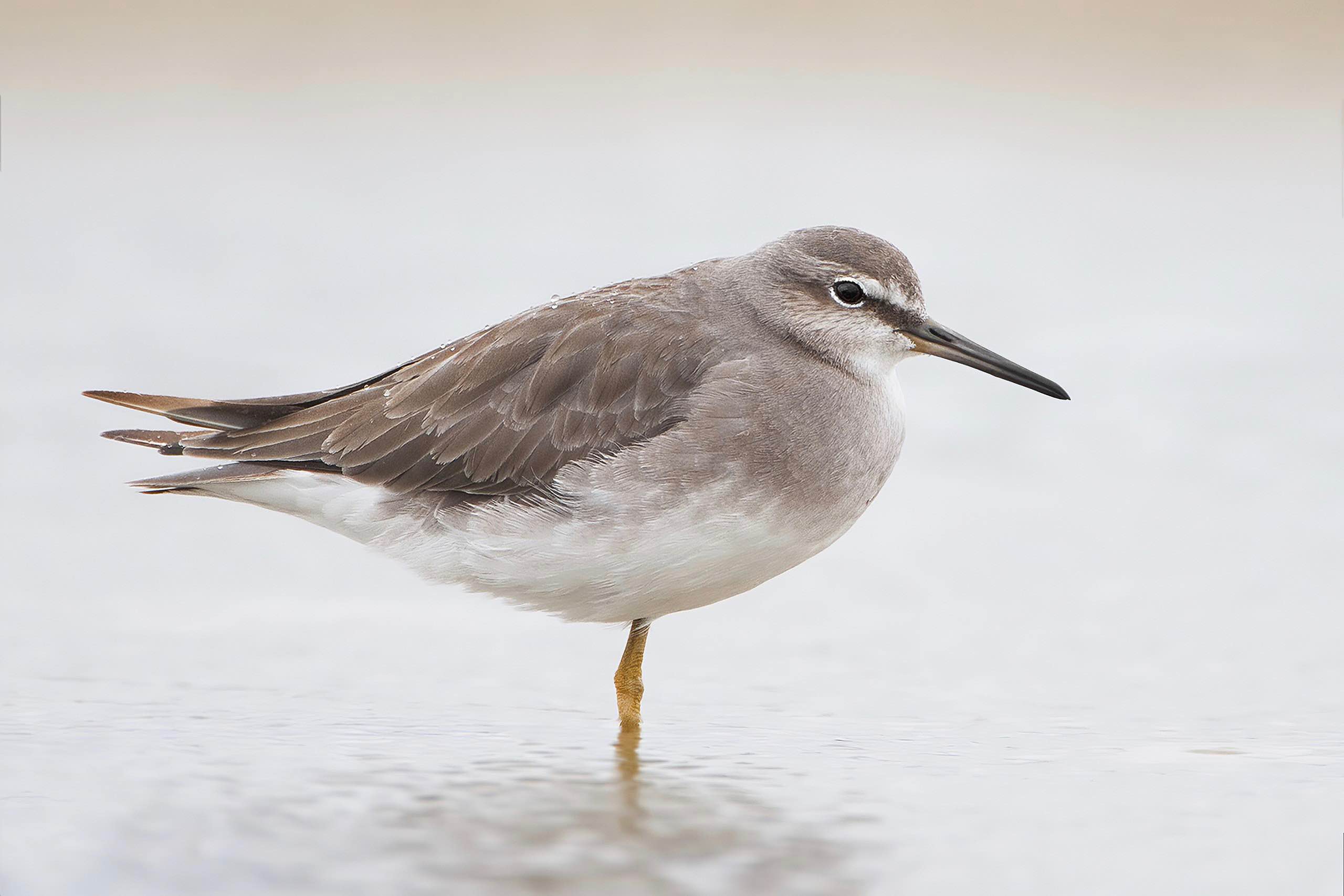 Rarities included: Grey-tailed Tattler © J J Harrison |
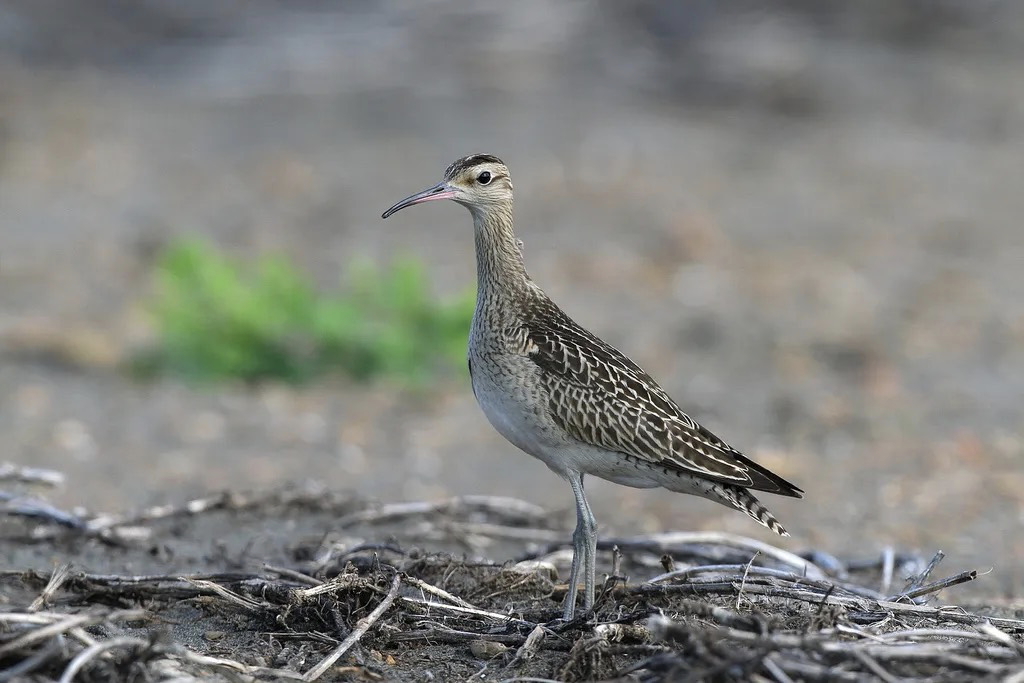 Little Curlew © Hirashi Haka
|
2. World Migratory Bird Day Global Light Pollution Webinars
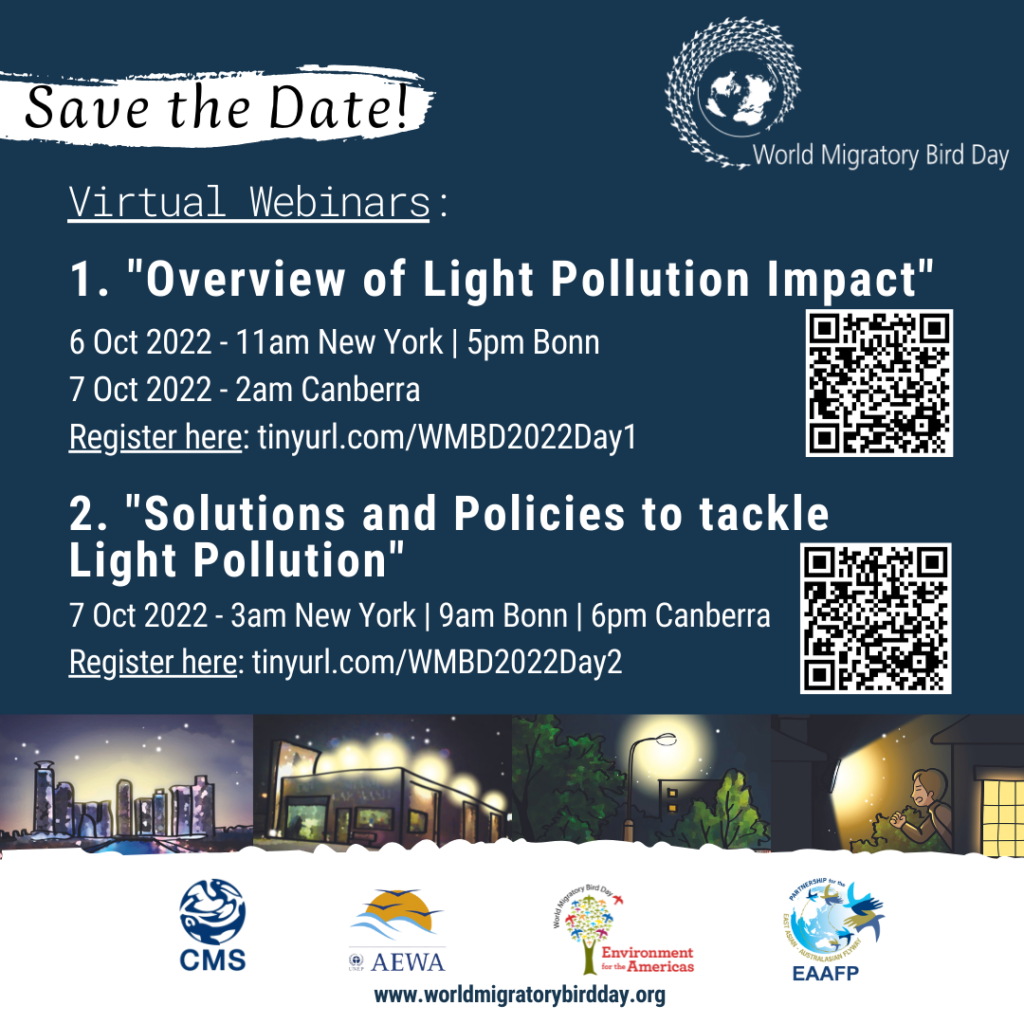
Session 1: Overview of Light Pollution Impact
Introduction
Light pollution impacts birds across the globe during migration, at stopover sites, and on breeding and non-breeding sites. Our awareness of its impacts has increased recently, and researchers, policy makers, and conservationists are working to understand more fully the scope of its impacts. The 2022 World Migratory Bird Day theme has helped to raise awareness of this issue and to bring current research to the public, as well as to recognize the many gaps in our knowledge.
This virtual webinar focuses on the impacts of light pollution on birds and will wrap up our 2022 events and activities, identify the results of key research, and highlight the ways that we can become involved in minimizing the impacts, whether as a country, a city, a community, a neighborhood, or an individual.
- Date/Time: 6th October, 2022 11 am New York Time /5pm Bonn Time/ 2 am Canberra Time (7th October Canberra time)
- Meeting Platform: Zoom
- Language: English
- Registration: https://us06web.zoom.us/webinar/register/WN_0elV4rd3SRKn6g4CAx53Dg
Speakers:
 |
Dr. Jeffrey Buler is a professor in the Department of Entomology and Wildlife Ecology at the University of Delaware (UD) in Newark, DE, USA. Dr. Buler established the Aeroecology Program at UD in 2011 and has led the development of novel methods for using weather surveillance radars to study the broad-scale distribution, movement, and habitat use patterns of flying animals, particularly migratory birds. His broad research interests include avian ecology, landscape ecology, remote-sensing, and conservation biology. In recent years, his research has focused on the impacts of artificial light at night on the flight behavior and stopover distributions of migratory land birds. | |
 |
Dr. Travis Longcore is a leading expert in the environmental and ecological effects of night lighting, including avian collisions with structures and the disruption of behavioral and physiological processes across species. Dr. Longcore is Adjunct Associate Professor at the UCLA Institute of the Environment and Sustainability and previously was a member of the Landscape Architecture faculty at the University of Southern California. His landmark article “Ecological Light Pollution” (Longcore and Rich 2004) and 2006 co-edited book Ecological Consequences of Artificial Night Lighting (Island Press) have come to define this new and rapidly growing research area in ecology. His recent work has addressed techniques of measuring and modeling impacts of light on coastal species, and the potential for spectrum to partially mitigate the impacts of light pollution. | |
 |
Judy Pollock has been active in bird conservation, community science, and habitat restoration projects in the Chicago area since the late 90’s. Currently president of Chicago Audubon Society, Judy helped to found the Bird Conservation Network and the BCN Survey, and served as Director of Bird Conservation at Audubon Chicago Region. She helped to initiate a number of local bird habitat projects. | |
| Moderator: | Andrew Farnsworth is a Senior Research Associate in the Center for Avian Population Studies at the Cornell Lab of Ornithology. Andrew began birding at age 5 and quickly developed his long-standing fascinations with bird migration. His current research efforts advance the use and application of rapidly expanding technologies to study bird movements across scales including weather surveillance radar, audio and video recording and monitoring tools, citizen science datasets, and machine learning techniques and apply this research to impacting conservation actions. Andrew received his BS in Natural Resources from Cornell, MS in Zoology from Clemson University, and PhD in Ecology and Evolutionary Biology from Cornell University. He lives in New York, NY with his wife Patricia and two daughters Aja and Elle. |
Session 2: Solutions and Policies to tackle Light Pollution
Introduction
Light pollution impacts birds across the globe during migration, at stopover sites, and on breeding and non-breeding sites. Our awareness of its impacts has increased recently, and researchers, policy makers, and conservationists are working to understand more fully the scope of its impacts. The 2022 World Migratory Bird Day theme has helped to raise awareness of this issue and to bring current research to the public, as well as recognize the many gaps in our knowledge.
The second session of the virtual webinar series focuses on the solutions to tackle the impact of light pollution on migratory birds with the perspective from global, national, and city levels.
- Date/Time: 7th October, 2022, 3am New York Time/9am Bonn time/6pm Canberra time
- Meeting Platform: Zoom
- Language: English
- Registration: https://us06web.zoom.us/webinar/register/WN_Mp3Cnz5bSKengwVAkbBSoQ
Speakers
 |
Marco Barbieri, Scientific and Technical Officer at CMS
Marco is a conservation biologist by training. He holds a doctorate in environmental sciences from the University of Genoa, Italy. After a few years of work as research assistant in the University of Genoa, he undertook a career in international organizations. He worked for 8 years for the Mediterranean Action Plan of UNEP. In 2000 he moved to Bonn to joint the Secretariat of the Convention on the Conservation of Migratory Species of Wild Animals. Marco held different positions in the Secretariat over the years. Currently he is the Scientific Adviser of the Secretariat, his main responsibilities include facilitating the work of the Scientific Council of CMS, and leading the work of the Secretariat on some crosscutting issues. Of particular relevant to this webinar, he is the person leading on the topic of light pollution, which includes overseeing and guiding the development of the new CMS Guidelines on Light Pollution due to be presented to the CMS Conference of the Parties at the end of 2023. |
|
 |
Caesar San Miguel, Senior Policy Officer, Department of Climate Change, Energy, the Environment and Water, the Australian Government
Caesar San Miguel works for the Australian Department of Climate Change, Energy, the Environment and Water on light pollution policy for wildlife. He has been working on light pollution since 2020. Most recently he is working on further developing Australia’s National Light Pollution Guidelines for Wildlife. |
|
 |
Ivo Tejeda, El director de la Red de Observadores de Aves y Vida Silvestre (ROC), Chile
Ivo Tejeda is the director of the Network of the Red de Observadores de Aves y Vida Silvestre (ROC) and works together with researchers and the community to improve the best lighting practices of urban areas near to seabirds. |





